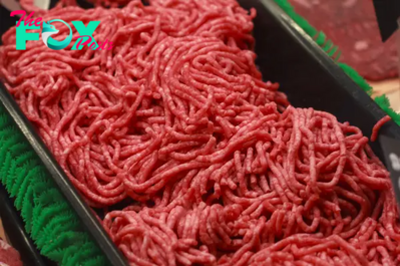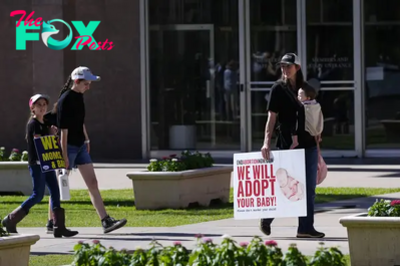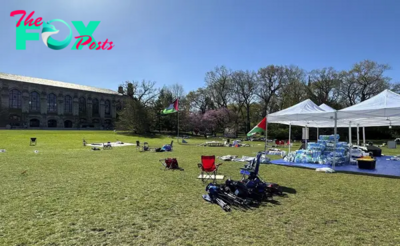US News
Deaths due to extreme heat at national parks increasing, data from the National Parks Service shows
National parks aficionados are making their annual summer pilgrimage to their favorite gateway to the great outdoors, but the extreme heat that has been plaguing much of the U.S. is making that trek more dangerous.
Despite the unrelenting heat that has been breaking records all over the country -- especially the West -- people are still flocking to national parks, Cynthia Hernandez, public affairs specialist for the National Park Service, told ABC News.
"People are still excited about coming out to national parks in whatever condition there exists out there, even in high heat conditions," Hernandez said.
But that enthusiasm is proving to be dangerous, even deadly in some cases.
MORE: Heat waves currently happening in North America, Europe 'virtually impossible' without climate change: Report
Death toll from heat illness at national parks is rising according to NPS
Extreme heat has killed more people at this point in the summer than any other year since 2007, records provided to ABC News by the NPS show. At least five people who have died in national parks since the start of the summer months are suspected to have succumbed to heat-related illness, according to press releases by the National Park Service.
A 14-year-old boy died on June 23 at Big Bend National Park in Texas, and his stepfather died while trying to find the teen help after he collapsed, according to the NPS. Temperatures soared to 119 degrees that day.

On the morning of July 3, a 65-year-old man was found inside his sedan about 30 yards off-road from North Highway Death Valley National Park in California, park officials said. The high temperature the previous day was 126 degrees Fahrenheit and the low was 98 degrees, according to the NPS.
Later that afternoon, a 57-year-old woman died after becoming unconscious while embarking on a remote 8-mile hike at the Grand Canyon National Park in Arizona, according to the NPS. High temperatures reached 114 degrees in some regions around the park that day.

The most recent death occurred on July 18, when a 71-year-old man died at the Golden Canyon trailhead at Death Valley National Park, where temperatures had reached 121 degrees that day, park officials said. The man had been photographed slathered in sunscreen and was wearing a sun hat and hiker clothes when he collapsed outside the restroom on the popular hiking trail, according to the NPS.
Heat illness is considered to be a factor in each of those deaths, according to the NPS.
MORE: Yellowstone visitors are getting so comfortable with approaching wildlife that park officials are asking them to stop
Extreme heat has not affected national park attendance
Despite being the hottest part of the year, summer has traditionally been a popular time for people to head to national parks, experts told ABC News. School is out, and families take jump at the opportunity to recreate outdoors.
Grand Canyon National Park was the second-most visited park in 2022, with more than 4.7 million visitors. Death Valley National Park saw about 1.1 million visitors in 2022, and Big Bend National Park saw about half million visitors in 2022, according to the NPS. All three locations are known for temperatures in the triple digits during the summer.

Those attendance numbers will likely stay on track, despite the high heat that has blanketed several regions in the U.S. in recent weeks and is forecast to do so for the rest of the season, Hernandez said.
When conditions are precarious, some activities like ranger-led hikes may be canceled. But it is unlikely that the parks will close, Hernandez added.

Triple-digit temperatures have rarely stopped Kevin Cook, a 60-year-old Silicon Valley banker, from visiting his favorite national parks.
Frequenting national parks for the past 25 years, Cook often spends time in the Mojave National Preserve in San Bernardino, California, as well as Death Valley National Park, he told ABC News. He has hiked and biked trails in both parks in temperatures up to 105 degrees, he said.
"For me, there's always more to explore out there," he said.

While temperatures as high as 120 degrees would likely deter him from venturing on a hike, he has experienced heat-related illness in past visits, he said. The illness came over him quickly, blurring his vision and decreasing his faculties, he said.
With some rest, shade and water, Cook was able to recuperate and continue his journey, he said.
Cook plans on hiking Death Valley National Park next month, when temperatures are not expected to cool off much, he added.
MORE: 93-year-old grandmother and grandson finish quest to visit all 63 national parks
How to stay safe while hiking national parks
Heat illness is the No. 1 weather-related killer in the world, with more than 600 people dying from heat-related illnesses every year in the U.S., according to the Centers for Disease Control and Prevention.
When temperatures are high, the body's ability to function decreases, Kathleen Davenport, medical director for emergency departments at the University of North Carolina at Chapel Hill Medical School, told ABC News.
As the body sweats, it loses more than just water. It loses salt and electrolytes as well. The significant imbalance created from excessive sweat can cause damage to the kidneys and can stress the heart and all systems in your body that are reliant on that balance to function, Davenport said.
"You don't even know you're sweating," Cook said. "When it reaches 100, you'll often find that there's grit on your skin, and that grit is your salt."

Severe dehydration can then lead to heat exhaustion or heat stroke, especially during strenuous activity that raises the heart rate, Davenport said.
"That's when people get into real, real trouble," she said.
The risks are even greater for vulnerable populations, such as young children, the elderly and anyone with preexisting conditions. People who are on certain medications, such as diuretics that cause you to expel more water, are at higher risk of heat-related illness as well.
Visitors have the responsibility of ensuring their own safety when recreating in national parks, which "are wild and have extreme conditions," Hernandez said.
"We ask our visitors to prepare for their trips to national parks in a way that helps them stay cool and beat the heat," she said.

Hernandez advised visitors to bring more water than they think they need and a UV umbrella for shade.
What many people don't realize is their bodies may not be acclimated to the climate they are traveling to, which increases the likelihood of experiencing heat-related illness in scorching temperatures, Davenport said.
Before embarking on a strenuous hike in extreme weather, Davenport advised visitors to allow their body time to acclimate to their new environment.
MORE: National Park Week: Why the conservation of these 'living laboratories' is so important
People should also pre-hydrate as much as possible, avoid going out during the hottest times of the day, between 10 a.m. and 3 p.m., and take frequent breaks in the shade, Davenport said. If you begin to feel lightheaded, dizzy, nauseated or muscle cramps, immediately cool down the body with a wet shirt or towel and rest in the shade, she added.
Hernandez urged those planning on visiting national parks this summer to research the topography and typical climates of each park so they can adequately prepare for the elements.
"You are going to need to understand the dangers of heat illness," she said.
-

 US News15m ago
US News15m agoAnother Boeing-Linked Whistleblower Has Died: What to Know About Josh Dean and Spirit Aero
-

 US News15m ago
US News15m agoStudent Journalists From Columbia to UCLA Are on the Frontlines Covering Campus Unrest
-

 US News6h ago
US News6h agoTexas Veterinarian Helped Crack the Mystery of Bird Flu in Cows
-

 US News6h ago
US News6h ago‘Why Are Police in Riot Gear?’: Inside Columbia and City College’s Darkest Night
-

 US News12h ago
US News12h agoPolice Shot and Killed Armed Student Outside Wisconsin Middle School
-

 US News12h ago
US News12h agoArizona Democrats Get Enough Votes to Repeal 19th Century Abortion Ban
-

 US News18h ago
US News18h agoBiden Cancels $6B in Debt for Former Students of the Art Institutes
-

 US News18h ago
US News18h agoNorthwestern University’s Deal With Student Protesters Offers Example of Successful Negotiations



























